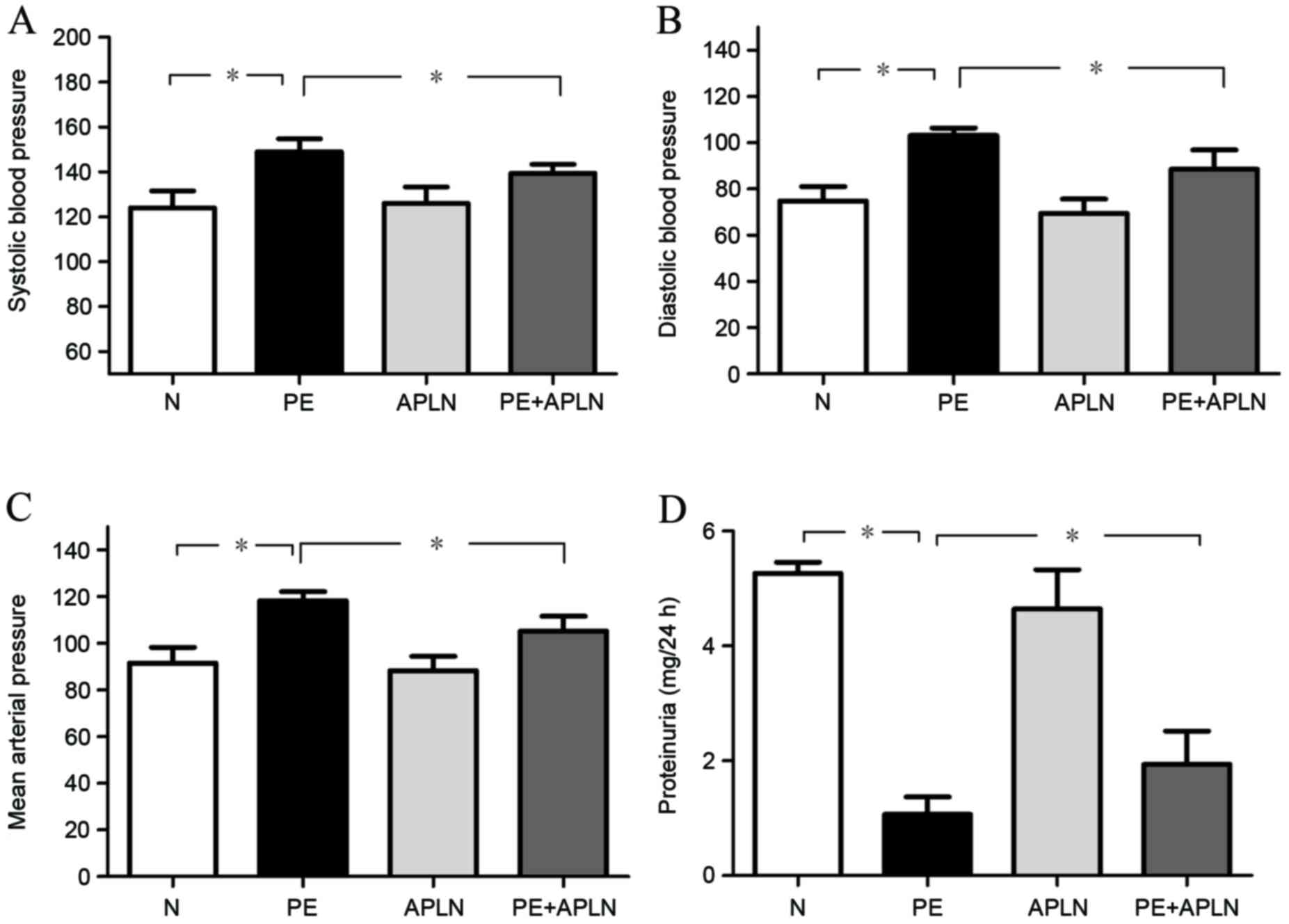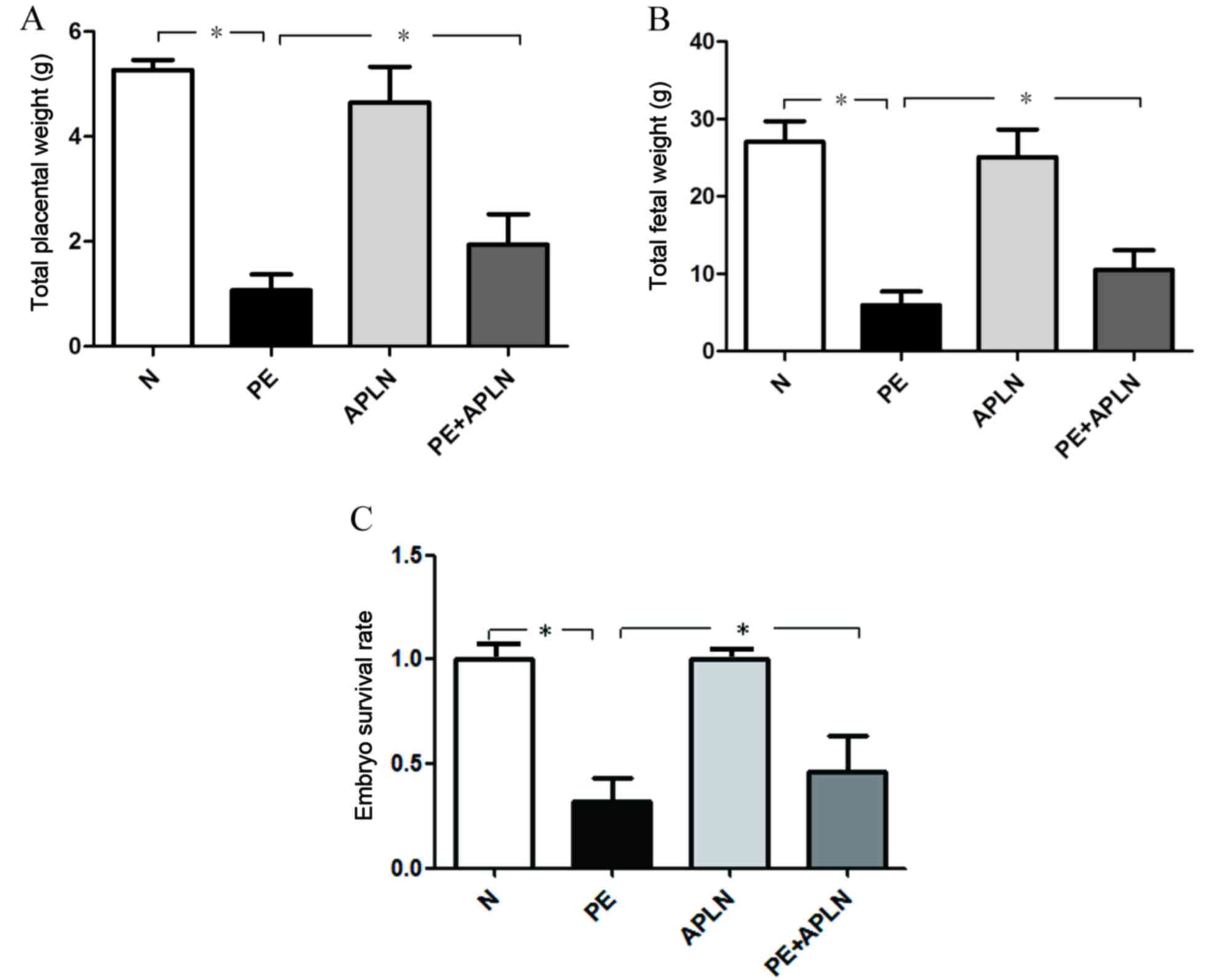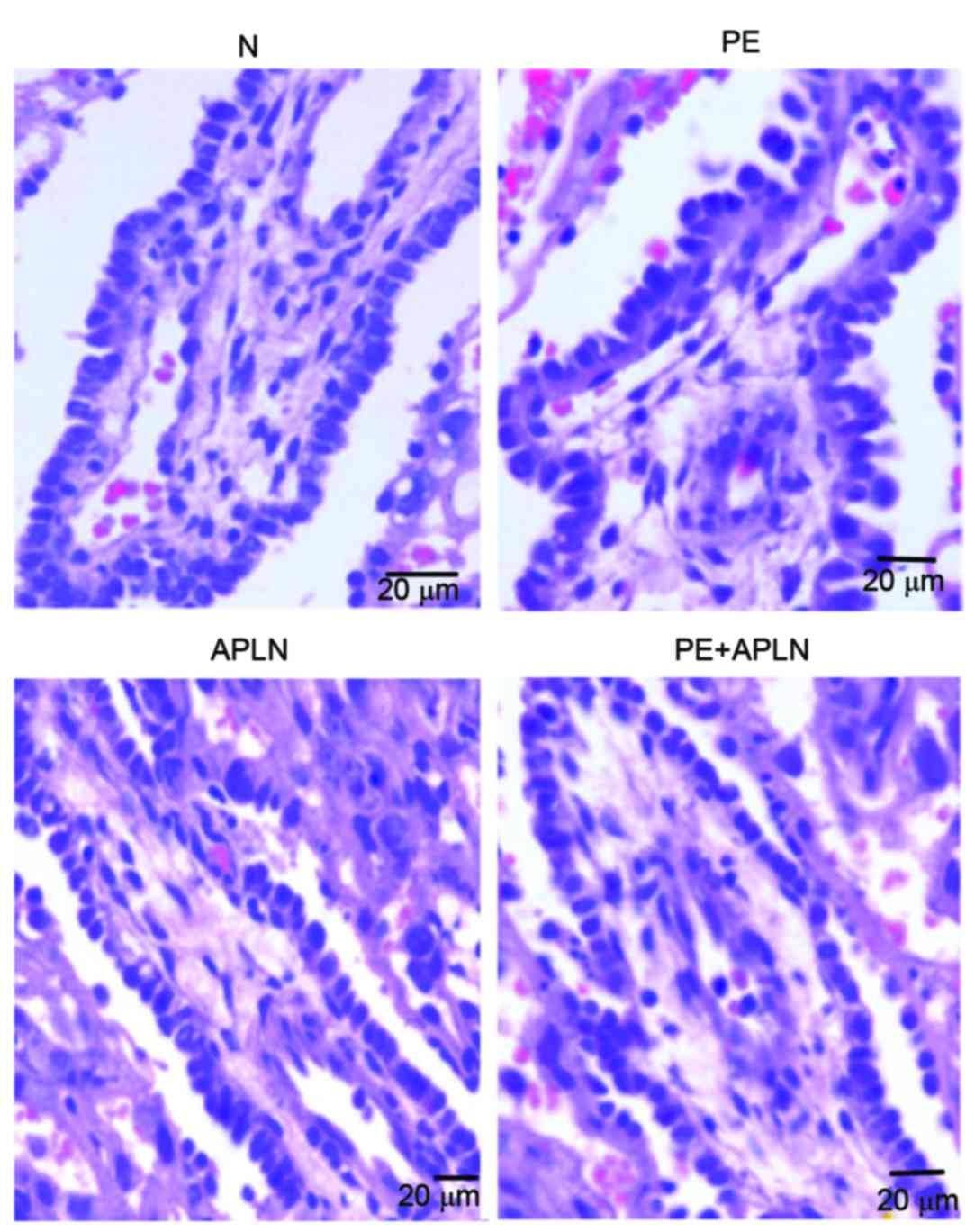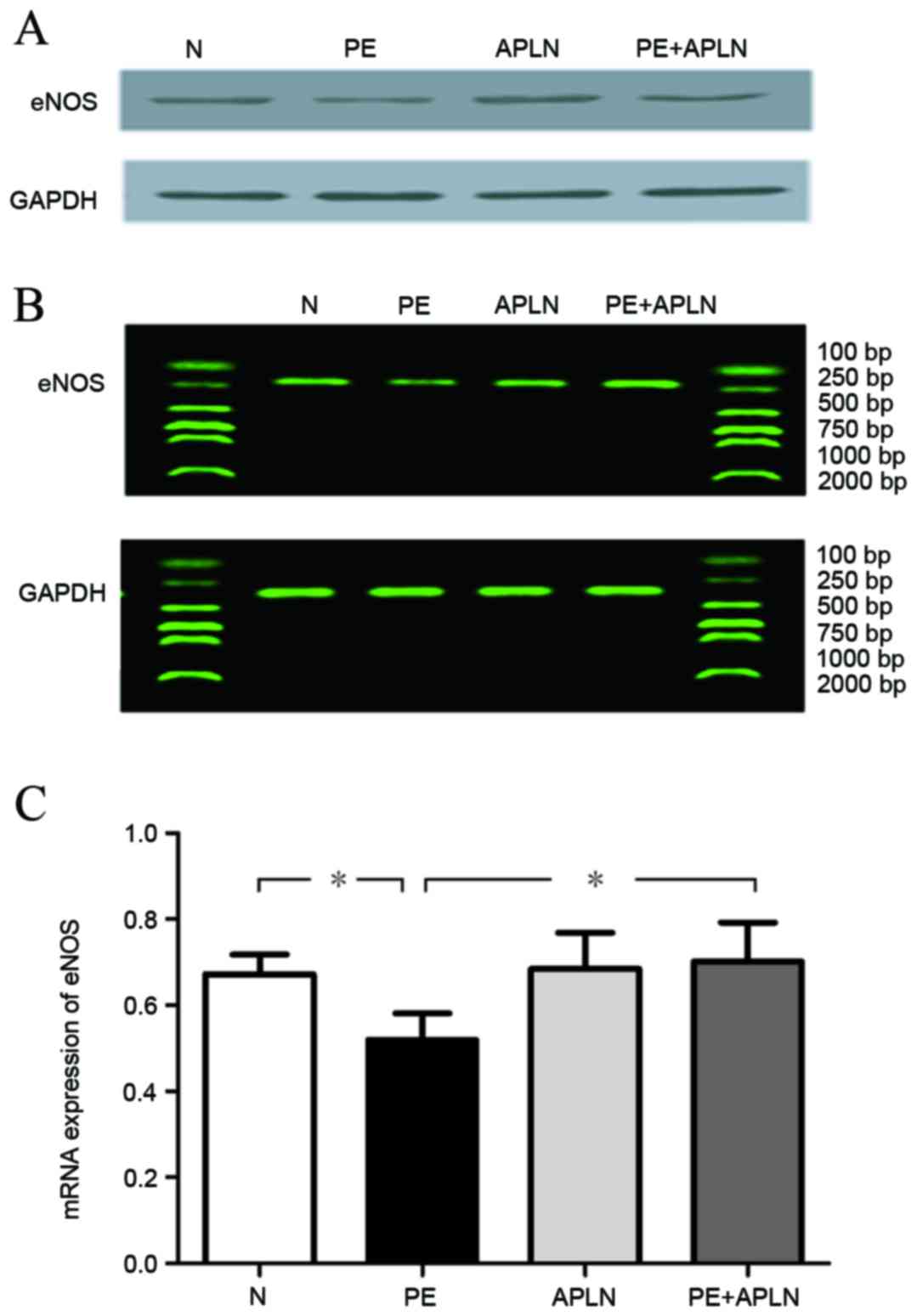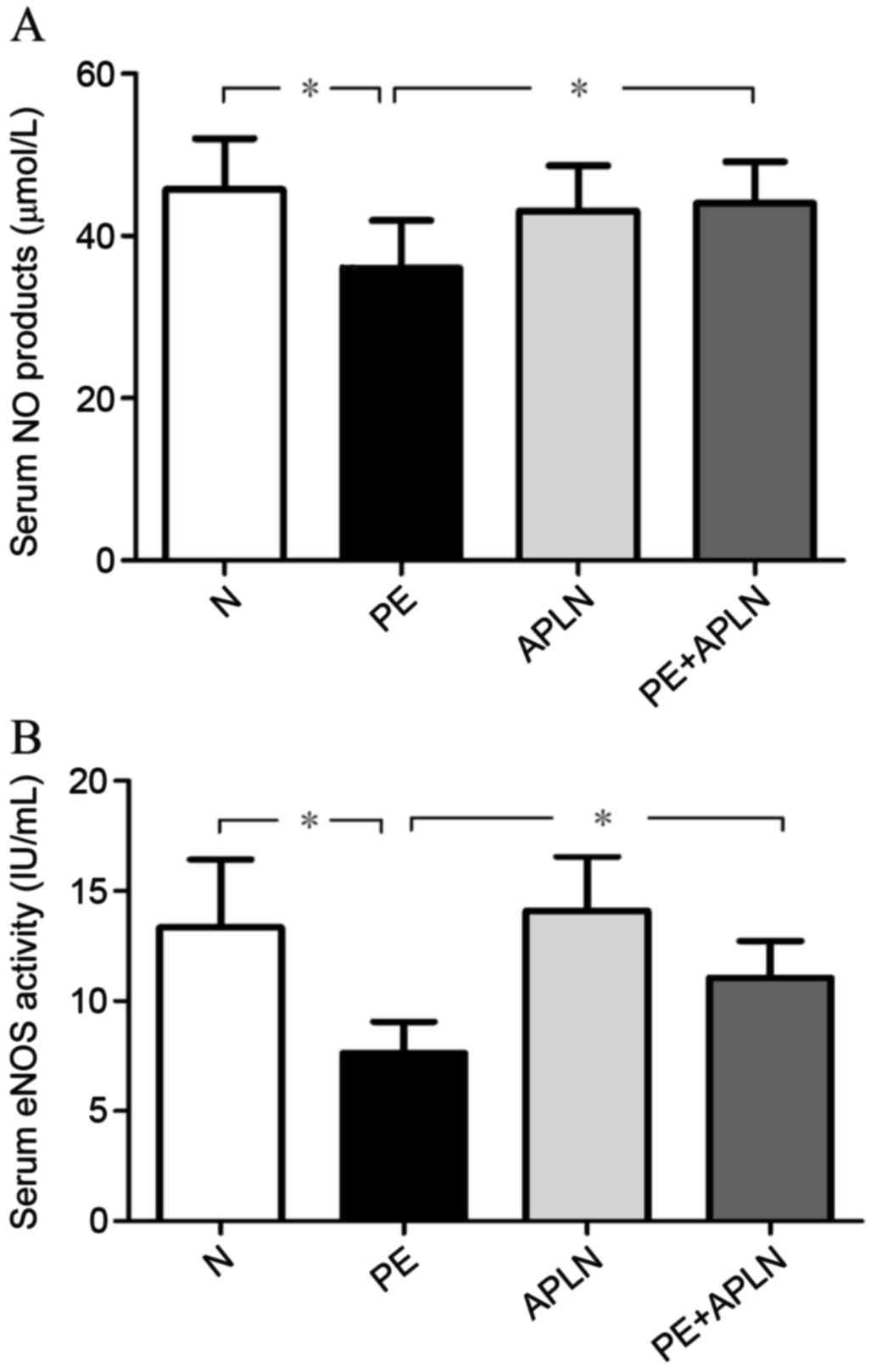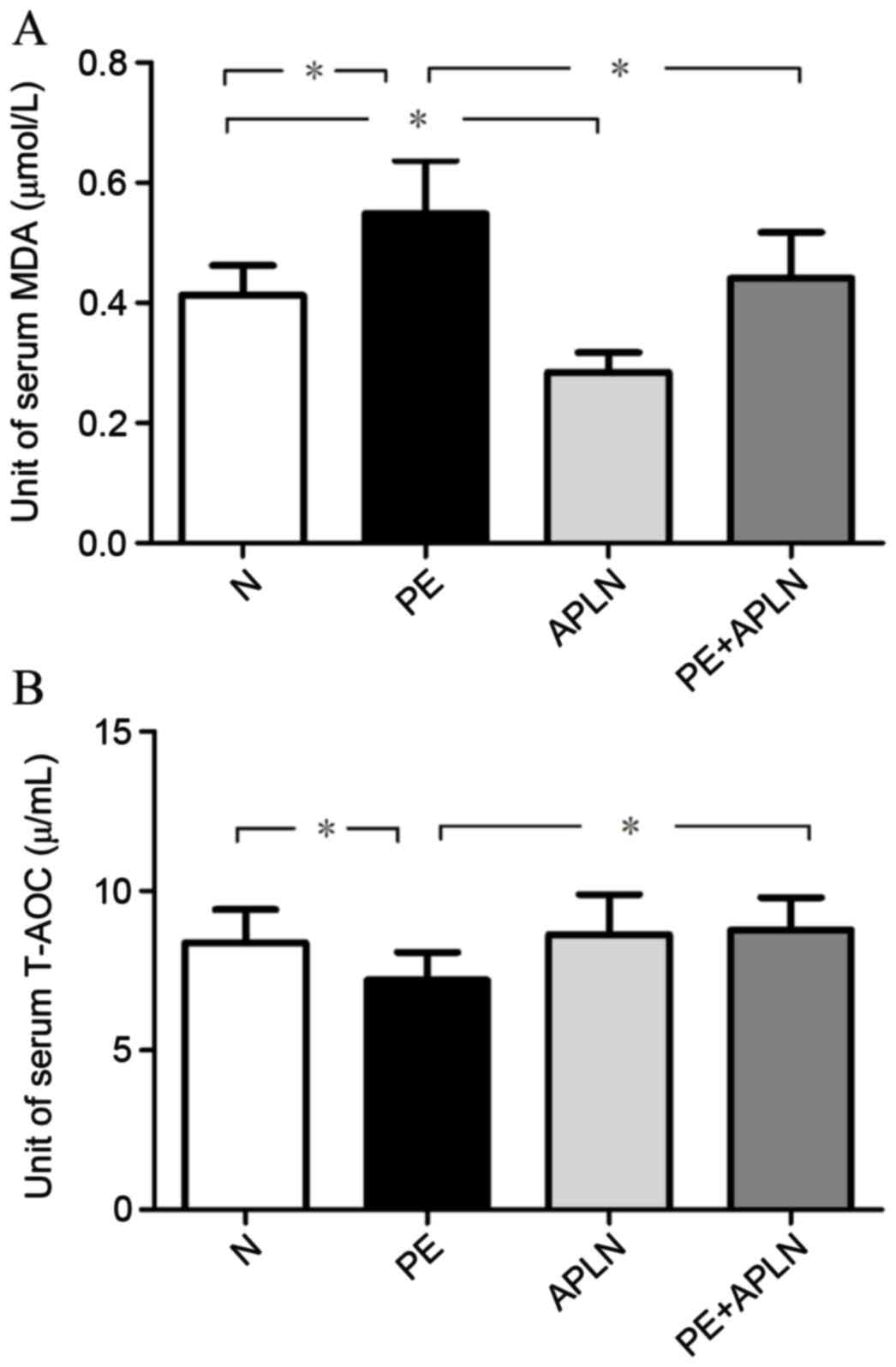|
1
|
Burton GJ, Jauniaux E and Watson AL:
Maternal arterial connections to the placental intervillous space
during the first trimester of human pregnancy: The boyd collection
revisited. Am J Obstet Gyneco. 181:718–724. 1999. View Article : Google Scholar
|
|
2
|
Walker JJ: Pre-eclampsia. Lancet.
356:1260–1265. 2000. View Article : Google Scholar : PubMed/NCBI
|
|
3
|
Hung TH, Skepper JN and Burton GJ: In
vitro ischemia-reperfusion injury in term human placenta as a model
for oxidative stress in pathological pregnancies. Am J Pathol.
159:1031–1043. 2001. View Article : Google Scholar : PubMed/NCBI
|
|
4
|
Redman CW and Sargent IL: Latest advances
in understanding preeclampsia. Science. 308:1592–1594. 2005.
View Article : Google Scholar : PubMed/NCBI
|
|
5
|
Duley L: Maternal mortality associated
with hypertensive disorders of pregnancy in africa, asia, latin
america and the caribbean. Br J Obstet Gynaecol. 99:547–553. 1992.
View Article : Google Scholar : PubMed/NCBI
|
|
6
|
Oyston CJ, Stanley JL and Baker PN:
Potential targets for the treatment of preeclampsia. Expert Opin
Ther Targets. 19:1517–1530. 2015. View Article : Google Scholar : PubMed/NCBI
|
|
7
|
O'Carroll AM, Lolait SJ, Harris LE and
Pope GR: The apelin receptor APJ: Journey from an orphan to a
multifaceted regulator of homeostasis. J Endocrinol. 219:R13–R35.
2013. View Article : Google Scholar : PubMed/NCBI
|
|
8
|
Lee DK, Cheng R, Nguyen T, Fan T,
Kariyawasam AP, Liu Y, Osmond DH, George SR and O'Dowd BF:
Characterization of apelin, the ligand for the APJ receptor. J
Neurochem. 74:34–41. 2000. View Article : Google Scholar : PubMed/NCBI
|
|
9
|
Lee DK, Saldivia VR, Nguyen T, Cheng R,
George SR and O'Dowd BF: Modification of the terminal residue of
apelin-13 antagonizes its hypotensive action. Endocrinology.
146:231–236. 2005. View Article : Google Scholar : PubMed/NCBI
|
|
10
|
Chun HJ, Ali ZA, Kojima Y, Kundu RK,
Sheikh AY, Agrawal R, Zheng L, Leeper NJ, Pearl NE, Patterson AJ,
et al: Apelin signaling antagonizes Ang II effects in mouse models
of atherosclerosis. J Clin Invest. 118:3343–3354. 2008.PubMed/NCBI
|
|
11
|
Japp AG, Cruden NL, Barnes G, van Gemeren
N, Mathews J, Adamson J, Johnston NR, Denvir MA, Megson IL, Flapan
AD, et al: Acute cardiovascular cffects of apelin in humans:
potential role in patients with chronic heart failure. Circulation.
121:1818–1827. 2010. View Article : Google Scholar : PubMed/NCBI
|
|
12
|
Szokodi I, Tavi P, Földes G,
Voutilainen-Myllylä S, Ilves M, Tokola H, Pikkarainen S, Piuhola J,
Rysä J, Toth M, et al: Apelin, the novel endogenous ligand of the
orphan receptor APJ, regulates cardiac contractility. Circ Res.
91:434–440. 2002. View Article : Google Scholar : PubMed/NCBI
|
|
13
|
Kidoya H and Takakura N: Biology of the
apelin-APJ axis in vascular formation. J Biochem. 152:125–131.
2012. View Article : Google Scholar : PubMed/NCBI
|
|
14
|
Leeper NJ, Tedesco MM, Kojima Y, Schultz
GM, Kundu RK, Ashley EA, Tsao PS, Dalman RL and Quertermous T:
Apelin prevents aortic aneurysm formation by inhibiting macrophage
inflammation. Am J Physiol Heart Circ Physiol. 296:H1329–H1335.
2009. View Article : Google Scholar : PubMed/NCBI
|
|
15
|
Medhurst AD, Jennings CA, Robbins MJ,
Davis RP, Ellis C, Winborn KY, Lawrie KW, Hervieu G, Riley G,
Bolaky JE, et al: Pharmacological and immunohistochemical
characterization of the APJ receptor and its endogenous ligand
apelin. J Neurochem. 84:1162–1172. 2003. View Article : Google Scholar : PubMed/NCBI
|
|
16
|
Bortoff KD, Qiu C, Runyon S, Williams MA
and Maitra R: Decreased maternal plasma apelin concentrations in
preeclampsia. Hypertens Pregnancy. 31:398–404. 2012. View Article : Google Scholar : PubMed/NCBI
|
|
17
|
Inuzuka H, Nishizawa H, Inagaki A, Suzuki
M, Ota S, Miyamura H, Miyazaki J, Sekiya T, Kurahashi H and Udagawa
Y: Decreased expression of apelin in placentas from severe
pre-eclampsia patients. Hypertens Pregnancy. 32:410–421. 2013.
View Article : Google Scholar : PubMed/NCBI
|
|
18
|
Yamaleyeva LM, Chappell MC, Brosnihan KB,
Anton L, Caudell DL, Shi S, McGee C, Pirro N, Gallagher PE, Taylor
RN, et al: Downregulation of apelin in the human placental
chorionic villi from preeclamptic pregnancies. Am J Physiol
Endocrinol Metab. 309:E852–E860. 2015.PubMed/NCBI
|
|
19
|
Furuya M, Okuda M, Usui H, Takenouchi T,
Kami D, Nozawa A, Shozu M, Umezawa A, Takahashi T and Aoki I:
Expression of angiotensin II receptor-like 1 in the placentas of
pregnancy-induced hypertension. Int J Gynecol Pathol. 31:227–235.
2012. View Article : Google Scholar : PubMed/NCBI
|
|
20
|
Cobellis L, De Falco M, Mastrogiacomo A,
Giraldi D, Dattilo D, Scaffa C, Colacurci N and De Luca A:
Modulation of apelin and APJ receptor in normal and
preeclampsia-complicated placentas. Histol Histopathol. 22:1–8.
2007.PubMed/NCBI
|
|
21
|
Kucur M, Tuten A, Oncul M, Acikgoz AS,
Yuksel MA, Imamoglu M, Balci Ekmekci O, Yilmaz N and Madazli R:
Maternal serum apelin and YKL-40 levels in early and late-onset
pre-eclampsia. Hypertens Pregnancy. 33:467–475. 2014. View Article : Google Scholar : PubMed/NCBI
|
|
22
|
Alexander BT, Kassab SE, Miller MT, Abram
SR, Reckelhoff JF, Bennett WA and Granger JP: Reduced uterine
perfusion pressure during pregnancy in the rat is associated with
increases in arterial pressure and changes in renal nitric oxide.
Hypertension. 37:1191–1195. 2001. View Article : Google Scholar : PubMed/NCBI
|
|
23
|
Granger JP, LaMarca BB, Cockrell K, Sedeek
M, Balzi C, Chandler D and Bennett W: Reduced uterine perfusion
pressure (RUPP) model for studying cardiovascular-renal dysfunction
in response to placental ischemia. Methods Mol Med. 122:383–392.
2006.PubMed/NCBI
|
|
24
|
Gilbert JS, Ryan MJ, LaMarca BB, Sedeek M,
Murphy SR and Granger JP: Pathophysiology of hypertension during
preeclampsia: Linking placental ischemia with endothelial
dysfunction. Am J Physiol Heart Circ Physiol. 294:H541–H550. 2008.
View Article : Google Scholar : PubMed/NCBI
|
|
25
|
Spradley FT, Tan AY, Joo WS, Daniels G,
Kussie P, Karumanchi SA and Granger JP: Placental growth factor
administration abolishes placental ischemia-induced hypertension.
Hypertension. 67:740–747. 2016. View Article : Google Scholar : PubMed/NCBI
|
|
26
|
Ashworth JR, Warren AY, Johnson IR and
Baker PN: Plasma from pre-eclamptic women and functional change in
myometrial resistance arteries. Br J Obstet Gynaecol. 105:459–461.
1998. View Article : Google Scholar : PubMed/NCBI
|
|
27
|
Hayman R, Warren A, Johnson I and Baker P:
Inducible change in the behavior of resistance arteries from
circulating factor in preeclampsia: An effect specific to
myometrial vessels from pregnant women. Am J Obstet. Gynecol.
184:420–426. 2001. View Article : Google Scholar
|
|
28
|
Lekontseva O, Jiang Y, Schleppe C and
Davidge ST: Altered neuronal nitric oxide synthase in the aging
vascular system: Implications for estrogens therapy. Endocrinology.
153:3940–3948. 2012. View Article : Google Scholar : PubMed/NCBI
|
|
29
|
Amaral LM, Pinheiro LC, Guimaraes DA,
Palei AC, Sertório JT, Portella RL and Tanus-Santos JE:
Antihypertensive effects of inducible nitric oxide synthase
inhibition in experimental pre-eclampsia. J Cell Mol Med.
17:1300–1307. 2013. View Article : Google Scholar : PubMed/NCBI
|
|
30
|
Eckman DM, Gupta R, Rosenfeld CR, Morgan
TM, Charles SM, Mertz H and Moore LG: Pregnancy increases
myometrial artery myogenic tone via NOS- or COX-independent
mechanisms. Am J Physiol Regul Integr Comp Physiol. 303:R368–R375.
2012. View Article : Google Scholar : PubMed/NCBI
|
|
31
|
Kulandavelu S, Whiteley KJ, Bainbridge SA,
Qu D and Adamson SL: Endothelial NO synthase augments fetoplacental
blood flow, placental vascularization, and fetal growth in mice.
Hypertension. 61:259–266. 2013. View Article : Google Scholar : PubMed/NCBI
|
|
32
|
Vadillo-Ortega F, Perichart-Perera O,
Espino S, Avila-Vergara MA, Ibarra I, Ahued R, Godines M, Parry S,
Macones G and Strauss JF: Effect of supplementation during
pregnancy with L-arginine and antioxidant vitamins in medical food
on pre-eclampsia in high risk population: Randomised controlled
trial. BMJ. 342:d29012011. View Article : Google Scholar : PubMed/NCBI
|
|
33
|
Jia YX, Lu ZF, Zhang J, Pan CS, Yang JH,
Zhao J, Yu F, Duan XH, Tang CS and Qi YF: Apelin activates
L-arginine/nitric oxide synthase/nitric oxide pathway in rat
aortas. Peptides. 28:2023–2029. 2007. View Article : Google Scholar : PubMed/NCBI
|
|
34
|
Busch R, Strohbach A, Pennewitz M, Lorenz
F, Bahls M, Busch MC and Felix SB: Regulation of the endothelial
apelin/APJ system by hemodynamic fluid flow. Cell Signal.
27:1286–1296. 2015. View Article : Google Scholar : PubMed/NCBI
|
|
35
|
Siddiqui IA, Jaleel A, Tamimi W and Al
Kadri HM: Role of oxidative stress in the pathogenesis of
preeclampsia. Arch Gynecol Obstet. 282:469–474. 2010. View Article : Google Scholar : PubMed/NCBI
|
|
36
|
Wu F, Tian FJ and Lin Y: Oxidative stress
in placenta: Health and diseases. Biomed Res Int. 2015:2932712015.
View Article : Google Scholar : PubMed/NCBI
|
|
37
|
Than A, Zhang X, Leow MK, Poh CL, Chong SK
and Chen P: Apelin attenuates oxidative stress in human adipocytes.
J Biol Chem. 289:3763–3774. 2014. View Article : Google Scholar : PubMed/NCBI
|
|
38
|
Pisarenko O, Shulzhenko V, Studneva I,
Pelogeykina Y, Timoshin A, Anesia R, Valet P, Parini A and
Kunduzova O: Structural apelin analogues: Mitochondrial ROS
inhibition and cardiometabolic protection in myocardial ischaemia
reperfusion injury. Br J Pharmacol. 172:2933–2945. 2015. View Article : Google Scholar : PubMed/NCBI
|



